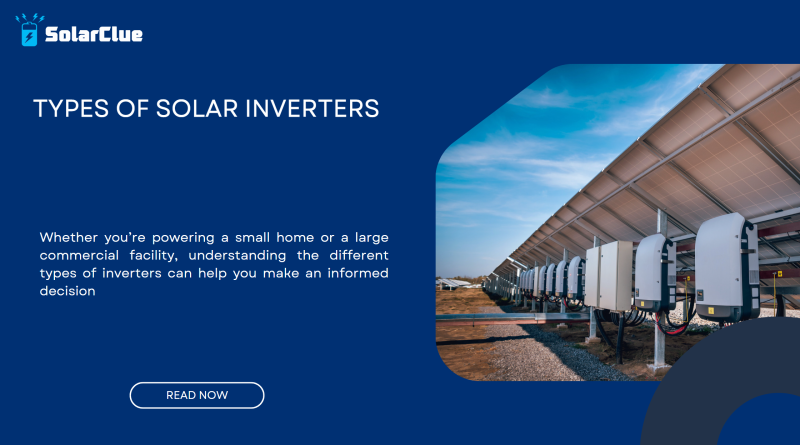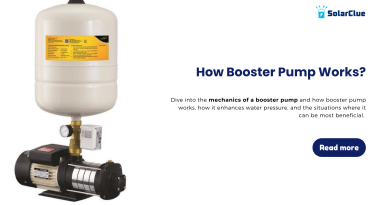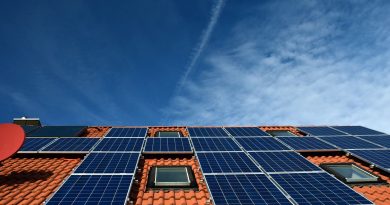Types of Solar Inverters
Hey there! So, you’re interested in solar energy and have come across the term “solar inverter.” If you’re scratching your head wondering what that is, don’t worry—you’re in the right place. Today, we’re going to dive into the different types of solar inverters, what they do, and how to choose the best one for your needs. We’ll break things down in a straightforward way so that by the end of this guide, you’ll feel confident about making the right choice for your solar setup.
Table of Contents
What is a Solar Inverter?
First things first: let’s clear up what a solar inverter actually is. Imagine your solar panels are like a bunch of tiny factories generating electricity. They produce direct current (DC) electricity, which is a bit like a one-way street—electricity flows in just one direction. But most of the appliances and systems in your home or business use alternating current (AC) electricity, which flows back and forth.
A solar inverter is like a traffic director for this electrical flow. It takes the DC electricity from your solar panels and converts it into AC electricity that your home or business can use. Without this conversion, the energy from your solar panels wouldn’t be usable for your everyday needs.
Types of Solar Inverters
Now, let’s get into the meat of the matter: the different types of solar inverters. There are a few main types, each with its own set of features and benefits. We’ll go through each type and help you understand how they work and where they’re most effective.
1. String Inverters
What Are They?
String inverters are the most common type of solar inverter. Imagine a string of holiday lights—each bulb in the string needs to work for the entire string to light up. Similarly, in a solar system with string inverters, multiple solar panels (arranged in series, or “strings”) are connected to a single inverter.
How Do They Work?
All the panels in a string feed their DC power to the inverter. The inverter then converts this power into AC power for your home.
Pros:
- Cost-Effective: Generally less expensive than other types of inverters.
- Simplicity: Easy to install and maintain.
- Proven Technology: Well-established and widely used.
Cons:
- Performance Issues: If one panel in the string gets dirty or shaded, it can affect the performance of the entire string.
- Limited Flexibility: Not ideal for complex roof layouts or shading issues.
2. Microinverters
What Are They?
Microinverters are small devices that are attached to each solar panel individually. Think of them as tiny inverters that work directly with each panel.
How Do They Work?
Each microinverter converts the DC power from its specific solar panel into AC power on its own. The combined AC power from all the microinverters is then fed into your home’s electrical system.
Pros:
- Enhanced Performance: If one panel is shaded or underperforming, it doesn’t affect the other panels.
- Flexibility: Great for complex roof layouts and situations where shading might be an issue.
- Monitoring: Easier to monitor the performance of individual panels.
Cons:
- Higher Cost: More expensive than string inverters due to the number of units required.
- Maintenance: While generally reliable, having more components can mean more potential points of failure.
3. Power Optimizers
What Are They?
Power optimizers are similar to microinverters but work a bit differently. They are devices installed on each solar panel but don’t convert DC to AC themselves. Instead, they optimize the DC power output before sending it to a central string inverter.
How Do They Work?
Power optimizers maximize the efficiency of each panel by managing its performance and sending the optimized DC power to the string inverter, which then converts it to AC.
Pros:
- Increased Efficiency: Helps improve the performance of each panel, especially in partial shading conditions.
- Cost-Effective: Typically less expensive than using microinverters for every panel.
- Monitoring: Allows for panel-level monitoring.
Cons:
- Central Inverter Required: Still relies on a central inverter, so if the central inverter fails, the system stops working.
- Additional Component: Adds another piece of equipment to the system, which can increase installation complexity.
4. Hybrid Inverters
What Are They?
Hybrid inverters are versatile devices that can handle both solar energy and energy storage systems, such as batteries. They can manage the power coming from your solar panels, and also store excess energy for later use.
How Do They Work?
Hybrid inverters convert DC power from solar panels to AC power for your home and can also control the flow of electricity to and from a battery storage system. This means you can store excess solar energy to use during non-sunny periods or at night.
Pros:
- Flexibility: Ideal for systems with energy storage, providing greater control over energy use.
- Energy Independence: Helps you use solar energy even when the grid is down.
- Future-Proof: Ready for integration with battery systems as solar technology evolves.
Cons:
- Higher Initial Cost: Generally more expensive than standard inverters.
- Complexity: More complex setup and installation, requiring skilled professionals.
Visit SolarClue® to see the best Solar Inverters. SolarClue® actively sells solar energy products at discounts of up to 50% on its online marketplace.



